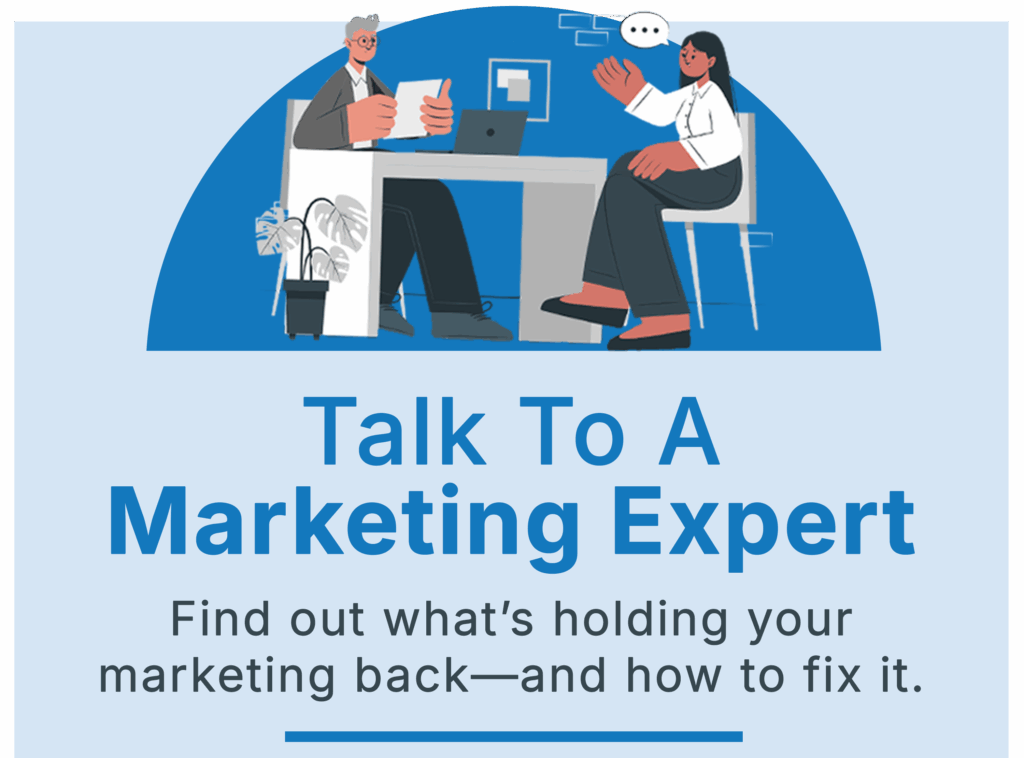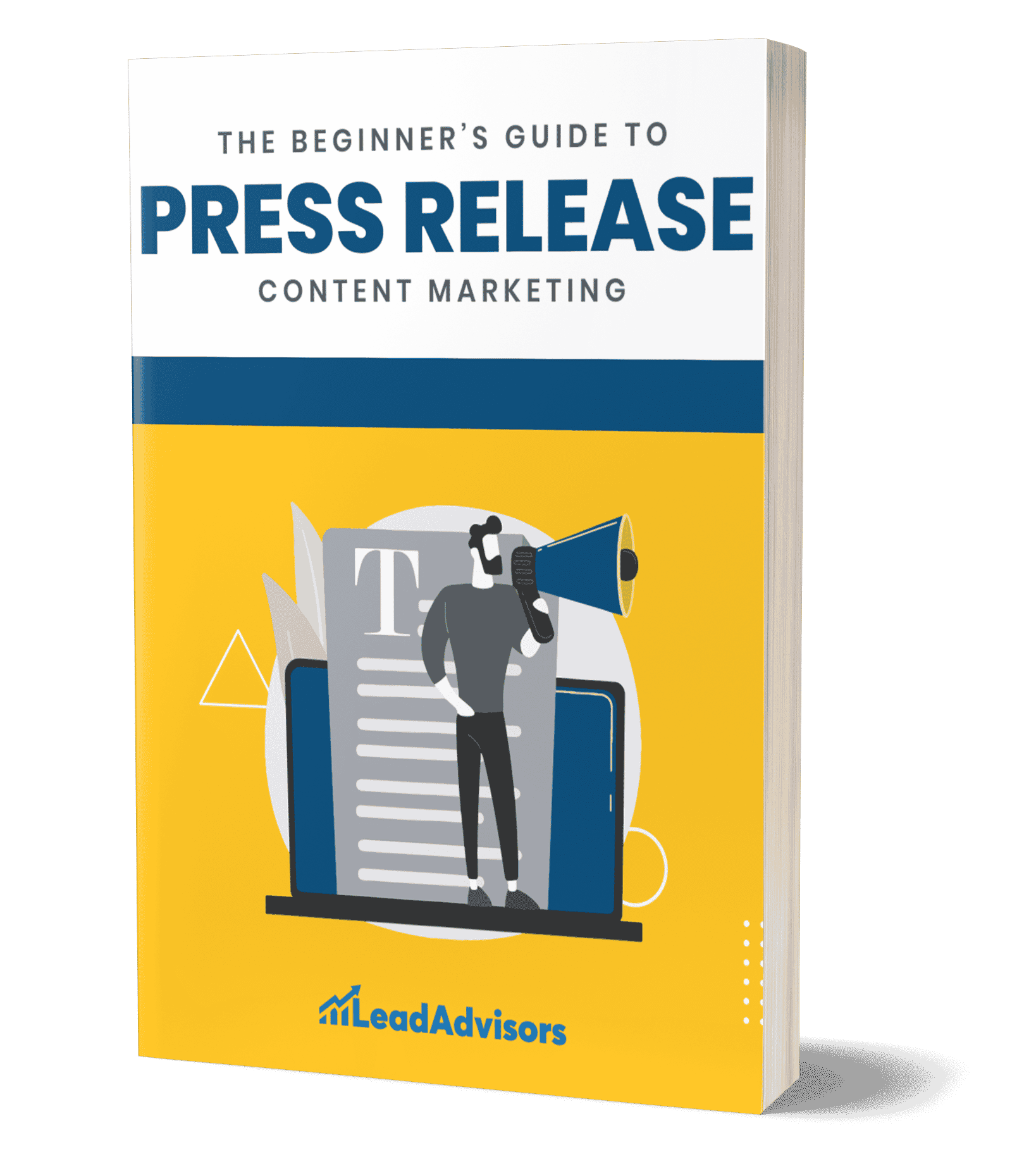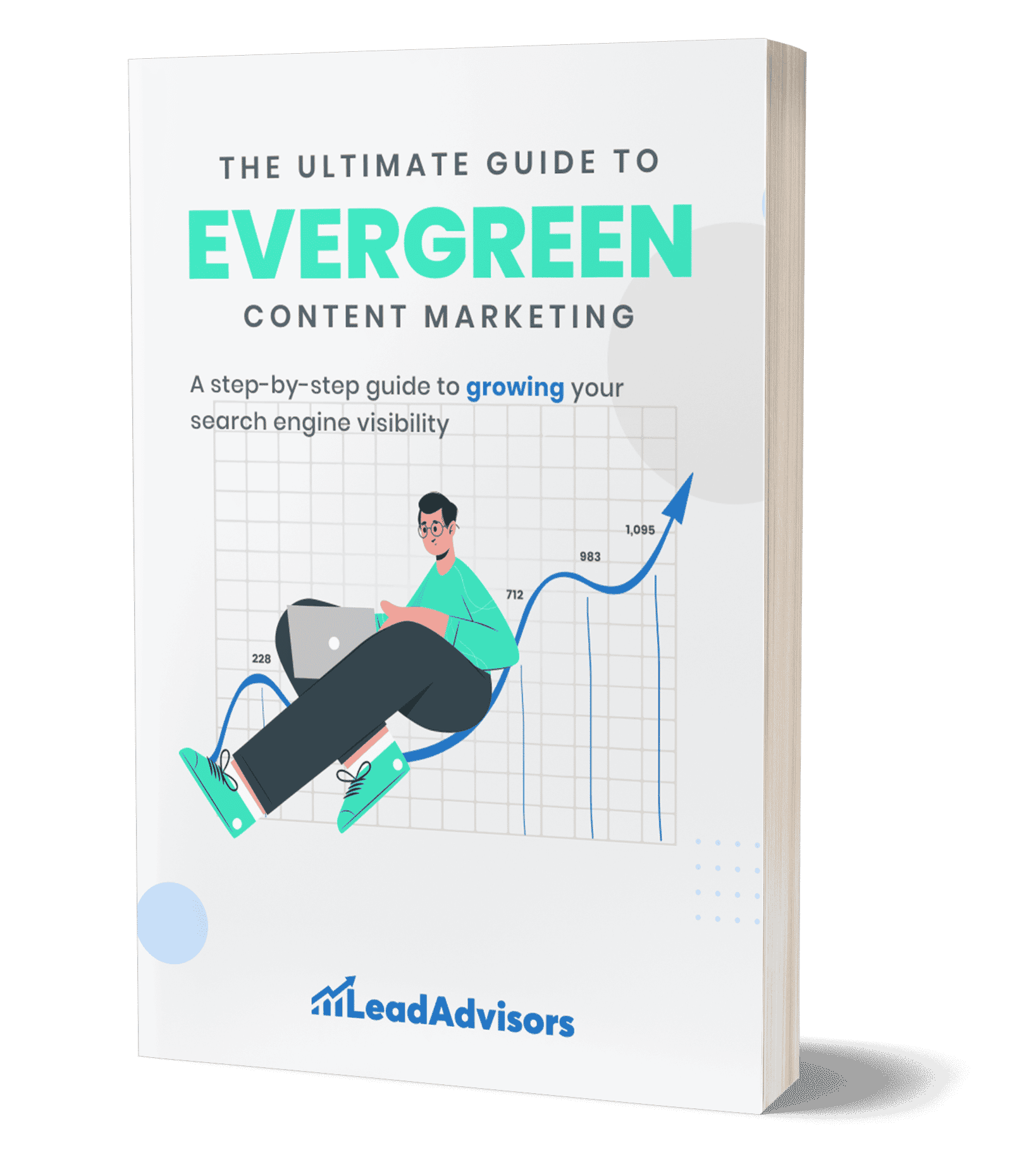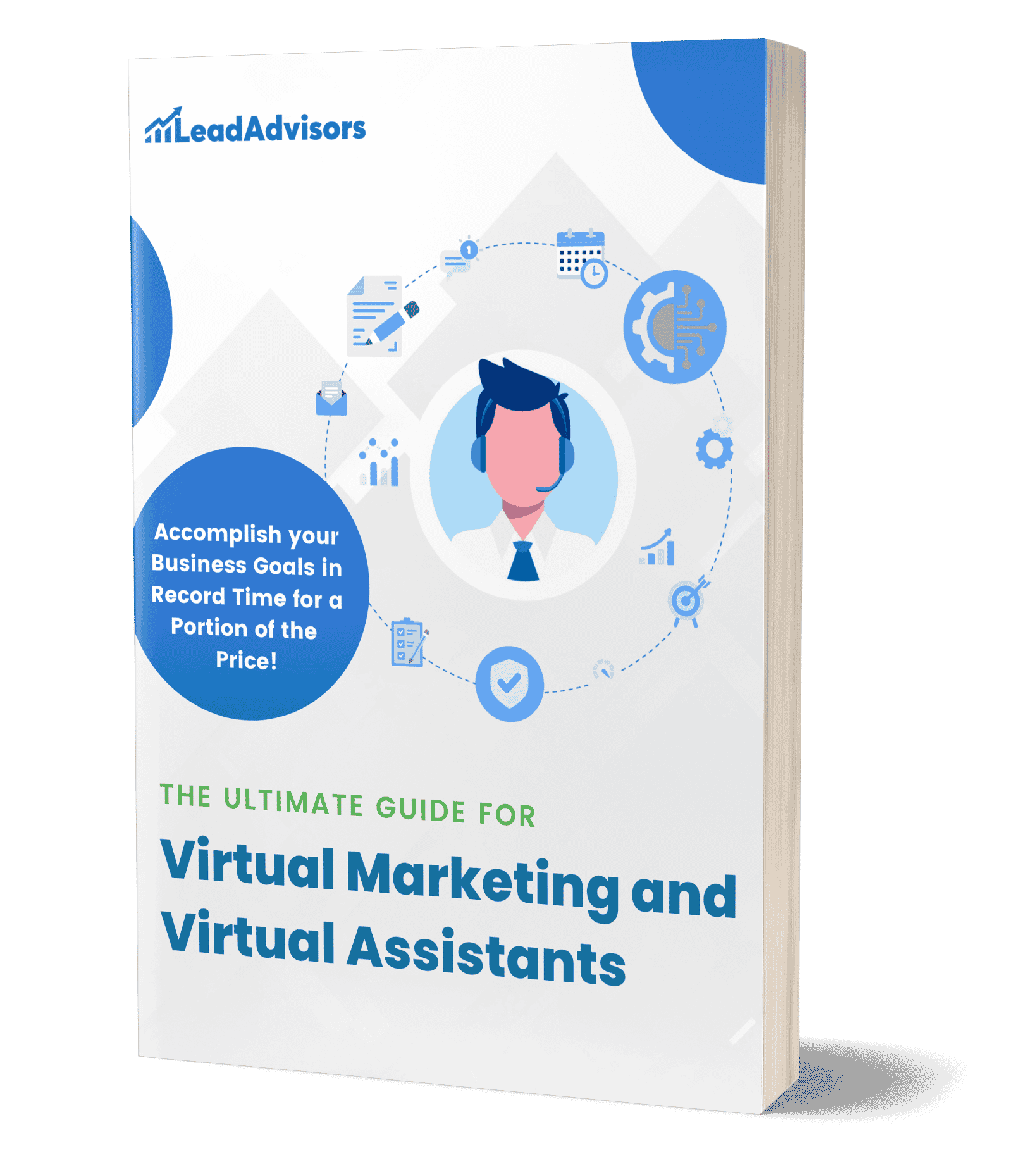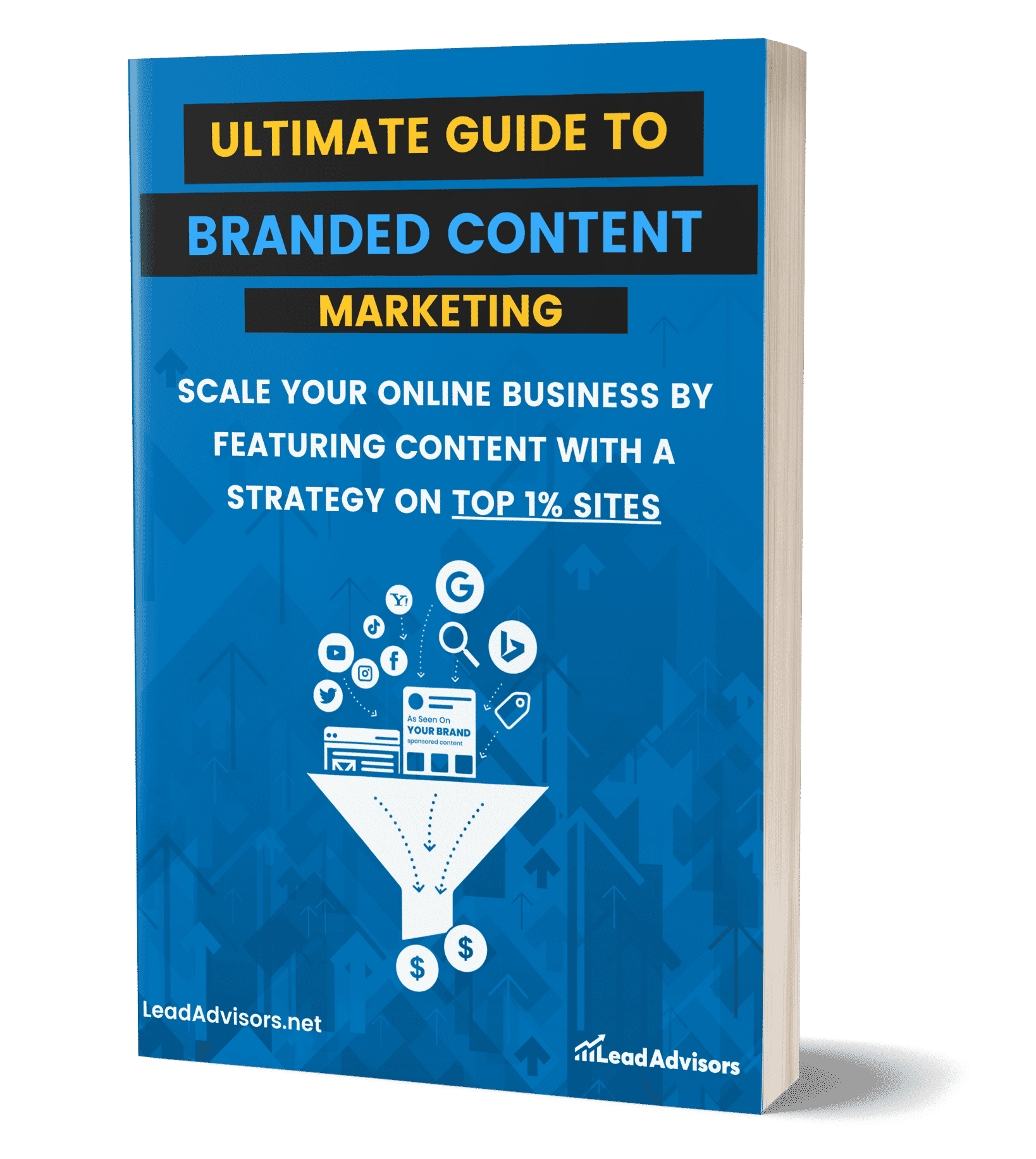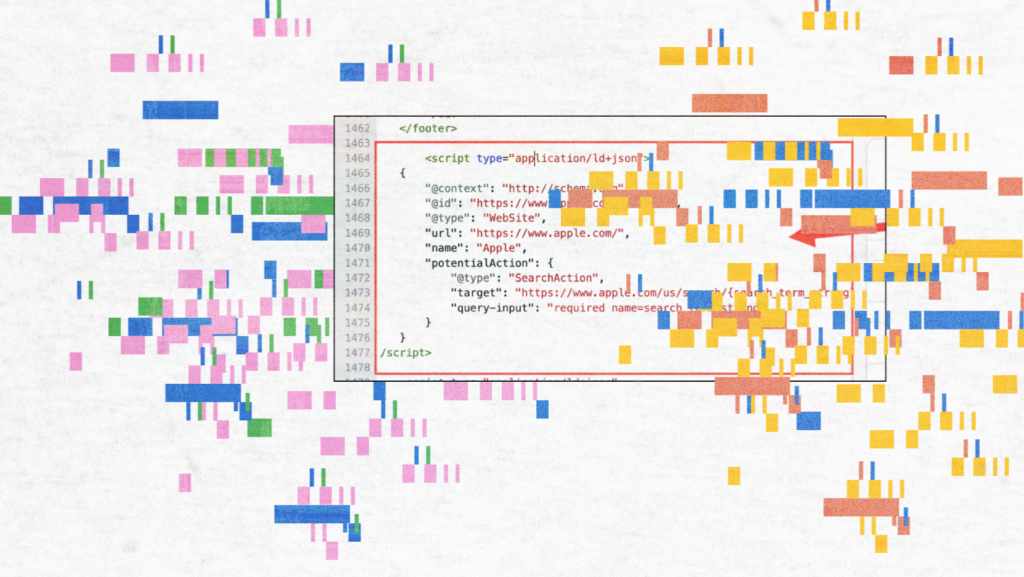The emergence of AI search is changing the content-considering aspect of Google, where EEAT – Experience, Expertise, Authoritativeness, and Trustworthiness – becomes central to the modern-day Search Engine Optimization (SEO). In a world where AI-made content is sweeping the internet, Google search algorithms are placing a stronger emphasis on the people-first information that is based on real-life experience and the knowledge that is credible.
To the specialists in SEO and digital marketers, E-E-A-T is no longer a choice to be recognized in the search results and survive in the search engine in the long term. E-E-A-T has been known to impact almost every signal of ranking and relevance, with Google having Quality Rater Guidelines, helpfully-rated systems, Product Review systems, and Helpful Content systems.
This guide divides the process of empowering the credibility and authority of your site, creating a sustainable search engine strategy, and keeping up with the changing requirements of Google, in order to ensure your content works well in the context of both search engines and artificial intelligence bioscopes and new digital marketing platforms.
TL;DR
- Google’s all about E-E-A-T, Experience, Expertise, Authoritativeness, and Trustworthiness, especially as AI takes over search.
- To stand out, focus on people-first content that’s honest, useful, and backed by real knowledge.
- Show experience: Share firsthand insights, reviews, or case studies.
- Prove expertise: Use data, cite sources, and highlight author credentials.
- Build authority: Earn mentions, quality backlinks, and media coverage.
- Earn trust: Be transparent, accurate, and keep your site secure.
- AI can churn out words — but authenticity is what ranks (and what readers remember).
What Is E-E-A-T?
E-E-A-T is the acronym used to denote Experience, Expertise, Authoritative, and Trustworthiness – four principles of Google Search Quality Rater Guidelines that are used to define the appearance of high-value content. Previously called E-A-T, Google incorporated Experience to put a stronger focus on real-world experience and personal experience of content creation.
Each element serves a purpose:
- Experience reflects firsthand involvement or tested knowledge.
- Expertise demonstrates subject matter depth and accurate information.
- Authoritativeness measures how credible your website or author is within their niche.
- Trustworthiness ensures transparency and factual reliability.
E-E-A-T is not a direct ranking factor, but it highly influences ranking systems that would dictate visibility in Google Search. Stated differently, Google does not rate E-E-A-T numerically; however, it does reward good content according to its purpose, helpful content criteria.
To the search engine optimization professional and online marketer, learning how to master E-E-A-T considerations is by producing useful content that is people-focused and comes across as an expert, yet as an authentic individual. This combination of real-life cases, author credibility, and valid information can help the brands gain trust and enhance their long-term SEO, despite the increasingly prevalent use of AI-generated content.
How Google Uses E-E-A-T
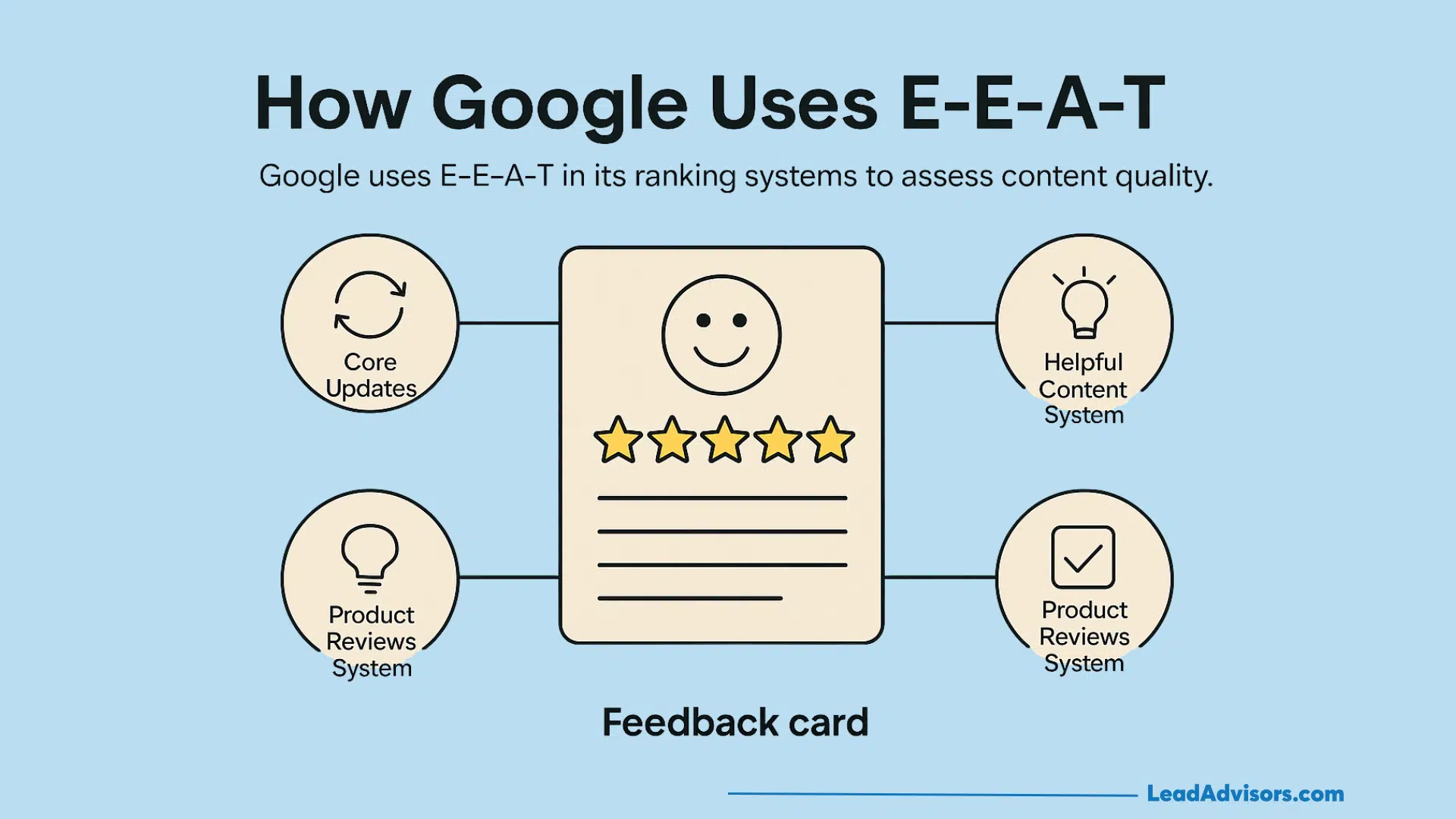
Google does not consider E-E-A-T in its ranking, but it is important to the ranking systems in terms of assessing the quality of the content. To see this, consider that E-E-A-T is the restaurant’s feedback card of Google Search – although diners’ reviews do not directly cook the meal, they assist with refining the recipe over time.
The Human Quality Rater evaluates the web content based on the Search Quality Rater Guidelines. Their ratings do not change personal search results but rather give information that is used to train the Google algorithms. This is an optimization of the process of search engines to understand indicators of experience, knowledge, authority, and reliability through billions of pages.
E-E-A-T is entrenched in a number of major systems in Google:
- Core Updates – adjust how relevance and trust are weighted.
- Helpful Content System – prioritizes people-first content over low-quality, keyword-stuffed material.
- Product Reviews System – rewards authentic reviews that show real-world experience and clear testing insights.
- AI Overviews (SGE) – elevate reliable, factual data from trustworthy sources for summarized answers.
Google quality raters have even more severe standards when it comes to YMYL (Your Money or Your Life) issues, such as financial stability, health, or safety. Misinformation may be detrimental to the well-being of the users in these fields, and therefore, expertise, authoritativeness, and trustworthiness become central to be demonstrated.
Concisely, E-E-A-T is the basis of Google’s algorithmic training. It determines the ranking of high-quality and relevant content, which meets the intent of the user, and assists SEO specialists and digital marketers in remaining visible in the ever-changing environment with AI-produced content and algorithm changes.
E-E-A-T and Google’s People-First Philosophy
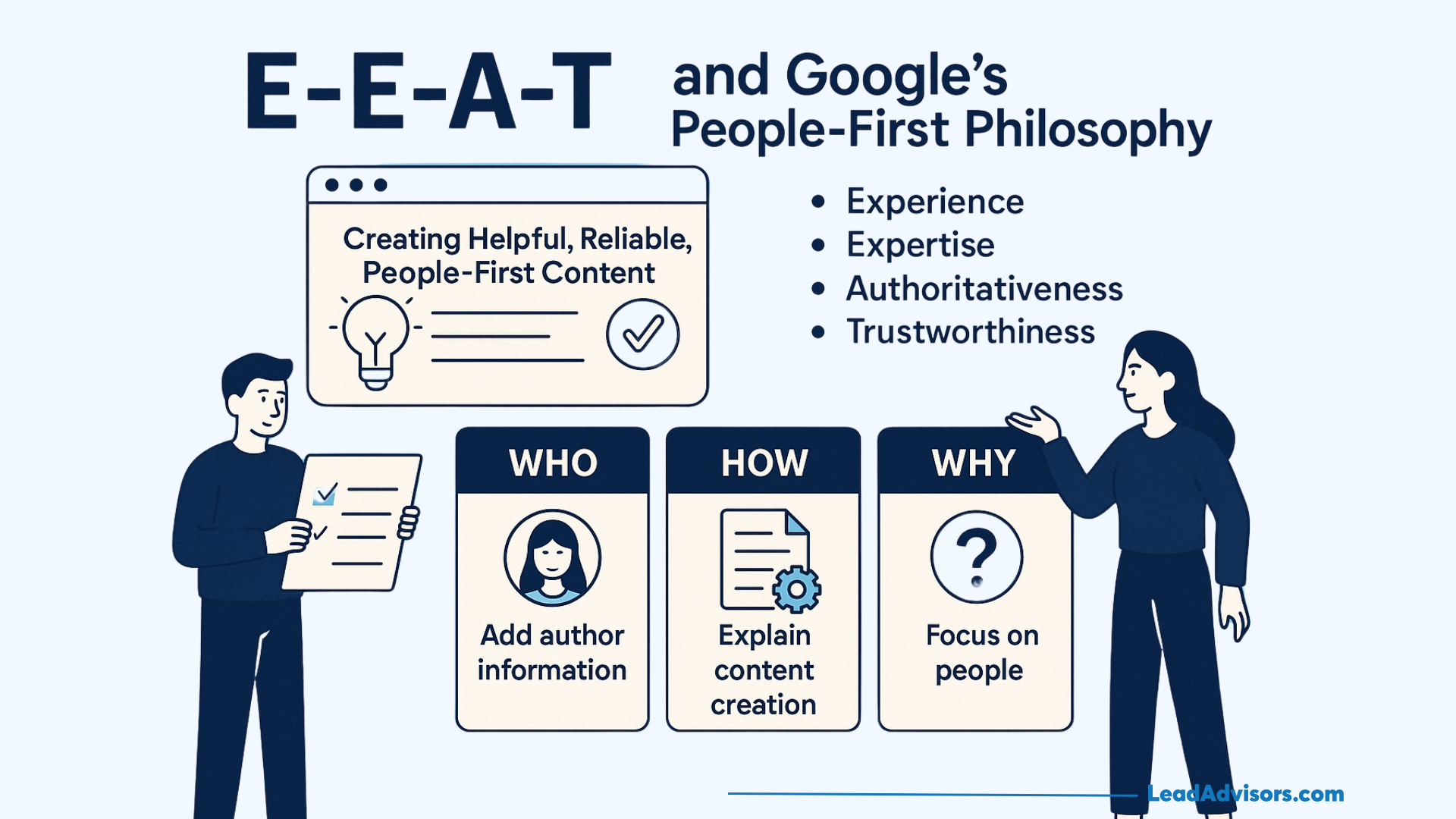
People-first philosophy at Google starts with the Creating Helpful, Reliable, People-First Content guide that suggests content creators should target real value instead of gaming the search results. In its essence, such a strategy would support E-E-A-T principles – it would focus on experience, expertise, authoritativeness, and trustworthiness to provide its users with useful and reliable information.
To assist the creators in fulfilling these expectations, Google has proposed the so-called Who, How, Why model that is used to assess the content quality:
- Who: This refers to the author of the content. Add author information, contact, and professional profile links. Fully disclosed authorship fosters trust among the users and indicates accountability.
- How: Detail the process of how the content was developed. In case of the use of AI tools or the use of AI-generated materials, provide it and underline the role of humans in reading, editing, and factual data.
- Why: Why does the content exist? It should be the motivation of the readers and not only search engines. People-first content informs, supports, or educates – search-engine-first content does not do anything except to rank.
To self-audit your website’s content, ask questions like:
- Does this article demonstrate real-world experience or subject matter expertise?
- Are sources cited and fact-checked against trustworthy sources?
- Is the content easy to read, aligned with user experience best practices, and free of bias?
When your SEO strategy is in line with the people-first structure of Google, you have a solid base of trust and credibility. This will promote not only superior search success in the results of Google Search and AI-generated summaries but also your brand authority and digital marketing weight in the long run.
The Four Pillars of E-E-A-T (With 2025 Examples)
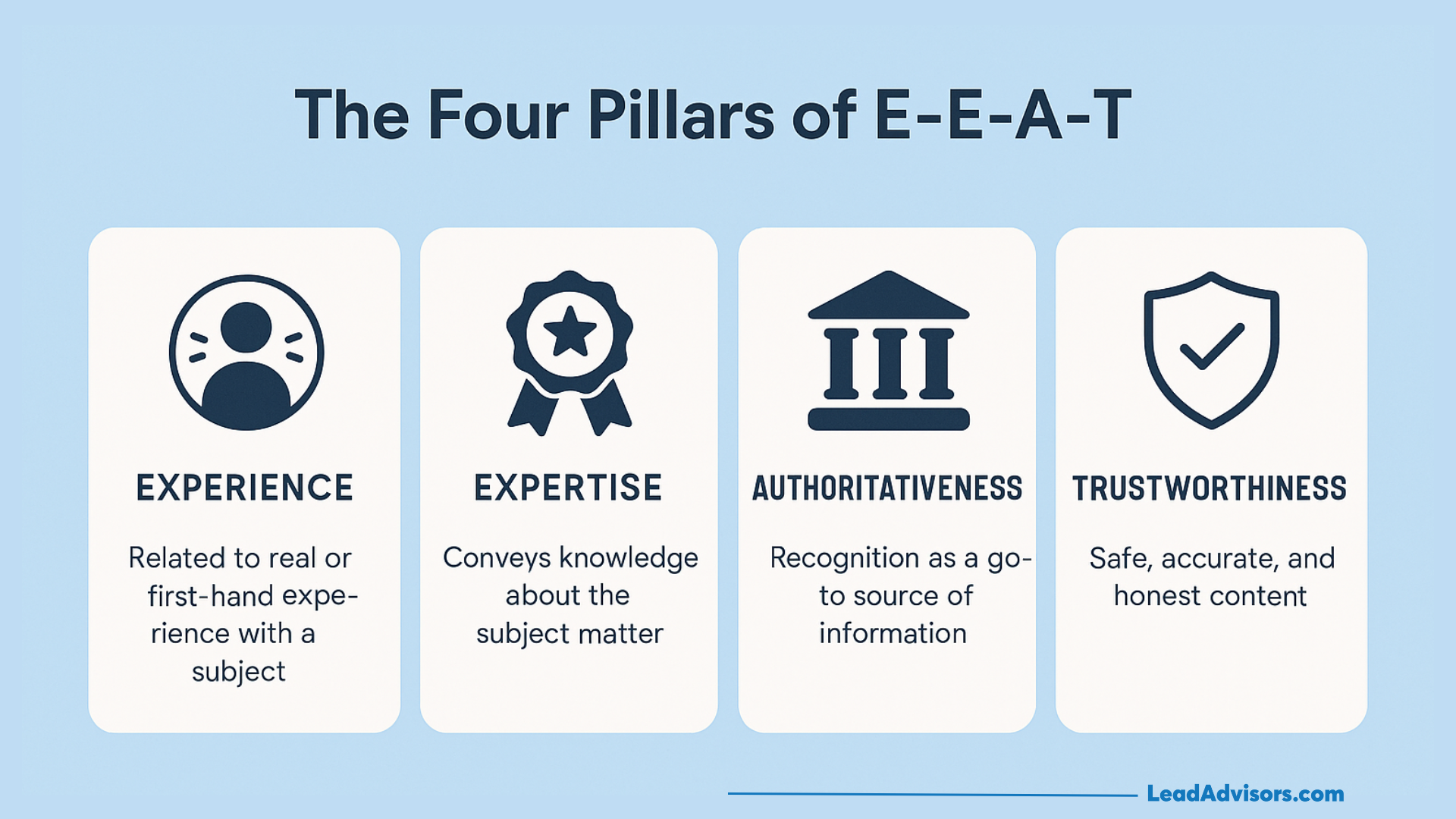
E-E-A-T is not simply a checklist – it is the basis of Google Search Quality Rater Guidelines and a guideline that has been used to define content quality on the internet. Every pillar – Experience, Expertise, Authoritativeness, and Trustworthiness – is an interpretation of the signal of credibility, relevance, and user trust in both old and new AI-generated content by the Google algorithms.
Experience
Experience is related to real or first-hand experience with a subject. Google puts a premium on what people who have used a product or tested a service have created. The indicators of genuine experience are:
- Personal product reviews, case studies, or tutorials
- Original photos, data, or observations from lived experiences
- Transparent storytelling backed by factual data
As an example, publications such as HomesteadingFamily or Dogster place an emphasis on life experience using practical examples – a strategy which works better than generic AI topics. In search results dominated by AI, human-generated stories show that they are authentic and cannot be synthesized using AI tools.
Expertise
Expertise means the degree to which a content developer conveys knowledge about the subject matter. It is not only degrees, but rather demonstrating sufficient knowledge of how to work on user problems, or how to describe complicated matters in a very clear way.
Some of the means of expressing expertise include:
- Adding detailed author bios with credentials and verified experience
- Citing peer-reviewed research, studies, and reliable information
- Implementing structured data like Person, Author, or Article schema
Formal and practical expertise is a critical difference in the sense of academic or professional qualifications and the mastery of hands-on skills. The two add to quality content created that meets search intent and credibility in Google search.
Authoritativeness
Authoritativeness is also achieved with time due to recognition and citations, as well as external validation. The systems of Google evaluate the level of reference of your site, brand, to credible resources, and adaptation of uniform content strategies, both effortlessly and across channels.
To develop trust, the site owners ought to:
- Earning backlinks and mentions from respected publications
- Gaining coverage on media sites like WebMD, REI, or Patagonia
- Tracking brand reputation using tools like Moz, Semrush, or Brand Monitoring
Domain Authority and Authority Score metrics are used to measure brand authority, whereas positive sentiment is used to determine the perception of the user concerning your trustworthiness on the internet.
Trustworthiness
Of all pillars, Trustworthiness is the most important – it is even referred to as the keystone of E-E-A-T by Google. It is about making users trust your content on a site to get safe information that is not biased or is accurate.
To develop trust, the site owners ought to:
- Use HTTPS for security
- Maintain clear contact information and customer policies
- Provide transparent ad disclosures
- Offer responsive support and ethical content practices
One of the best illustrations is AnnualCreditReport.com, which is created on the basis of credibility and trust created by openness, branding, and financial soundness.
The concept of trust, authority, and human knowledge in the AI search landscape in 2025 will not only be a question of visibility but also a question of how you retain credibility in the changing SEO ecosystems.
Measuring and Auditing Your E-E-A-T
Although E-E-A-T isn’t a direct ranking factor, it influences nearly every ranking system within Google’s algorithm. You can’t assign it a numerical score, but you can measure its impact through specific SEO performance indicators and brand credibility signals. These serve as proxies that reflect how well your site aligns with Google’s guidelines.
Key Metrics to Track
| Metric | Description |
| Share of Voice | Compare the frequency of occurrence of your brand in search results to those of your competitors. Semrush Enterprise AIO can be used to create a visualization of the trends and the gaps in visibility. |
| Brand Mentions and Sentiment | Track the way your company is being talked about on social media, blogs, and news websites. Trustworthiness and brand authority are enhanced with a positive image. |
| Author Visibility | Determine the expertise of your content creators in the subject matter by including them as a guest blogger, in the media, or referencing them in one of the reputable publications. |
| Quality Backlinks and Citations | Follow the backlinks of reliable sources; they are good references of authoritativeness and credibility in your niche market. |
Recommended Tools
- Semrush Enterprise AIO and Moz Brand Authority – Evaluate domain strength and authority trends.
- Hootsuite – Track social engagement, audience sentiment, and brand visibility.
- BuzzSumo – Identify influential content formats, mentions, and backlink sources.
Building an E-E-A-T Audit Checklist
Create an internal audit framework that ensures your website content consistently meets E-E-A-T standards. Include:
- Updated author bios and credentials
- Proper schema markup (Person, Article, Organization)
- Verified customer reviews and user-generated content
- Transparent contact information and brand policies
- Proof of real-world experience or case studies
This periodic self-evaluation will allow delivering high-quality content, increasing user trust, and adjusting it to the E-E-A-T criteria used by Google. In the long run, these will result in enhanced search performance, better placements on search engine result pages, and more sustainable digital marketing development.
Advanced SEO Tactics to Strengthen E-E-A-T
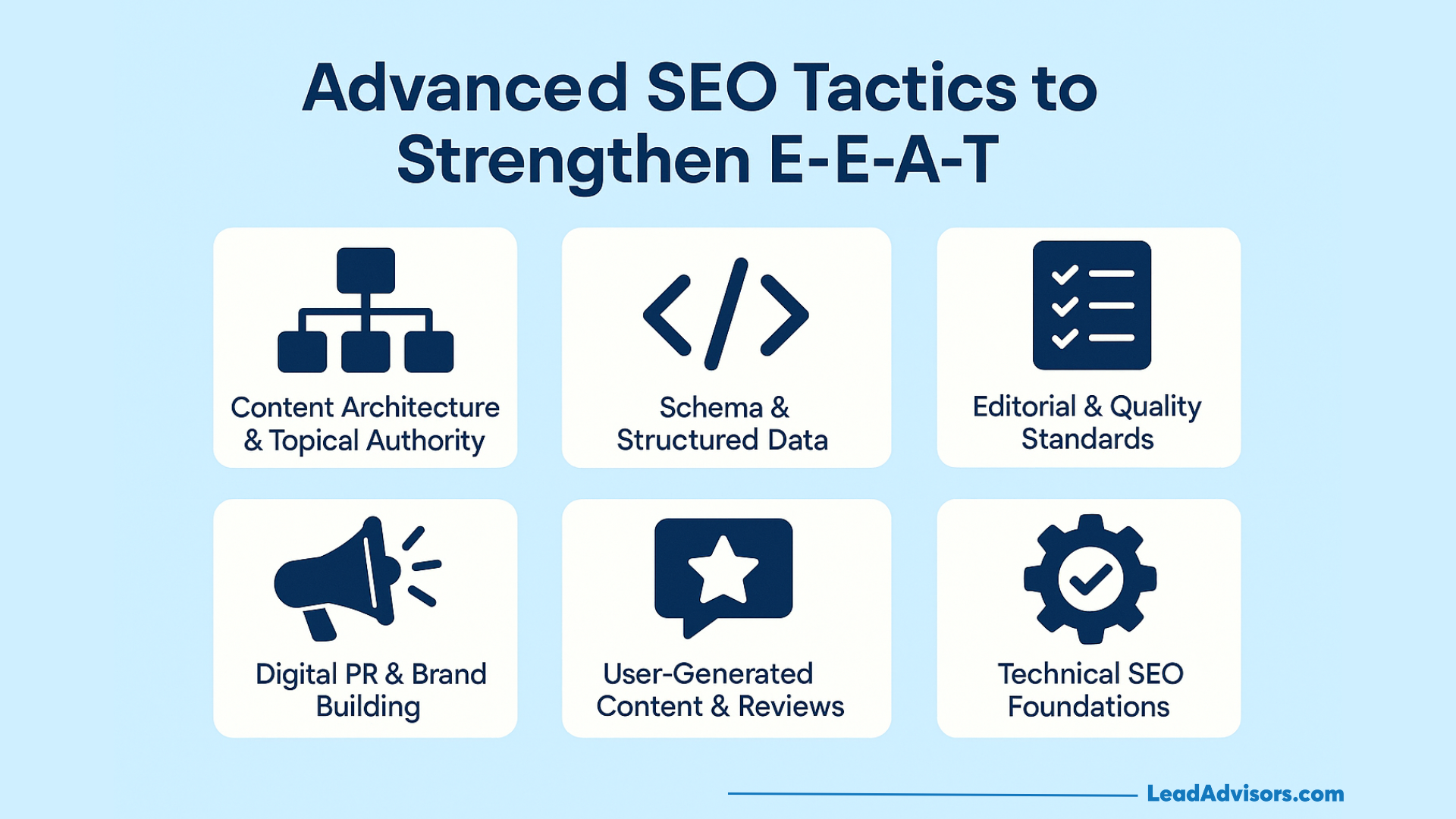
To enhance EEAT, it takes more than proper writing; it takes structure, credibility, and technical accuracy. To digital marketers and SEO professionals, such sophisticated approaches can be used to exhibit proficiency, authority, and credibility in all areas of content development and web search.
Content Architecture & Topical Authority
Effective content architecture conveys in-depth knowledge and experience on a large scale. Create theme clusters formed by major themes, connecting pillar pages with supporting blog posts that discuss subtopics in greater detail. This architecture sends a message to the Google algorithm that you have an in-depth and thorough coverage of the subject, and you are the best to be informed on any subject.
Internal linkage is also very important – it promotes contextual relevance and shares the power with the rest of the pages. As an illustration, you could refer to a case study in which clusters were found to enhance user experience and search rankings to demonstrate your brand as experienced in the real world.
Schema & Structured Data
Correct schema markup assists the search engines in interpreting your web content. Among the necessary schema types are an Organization, Person, Article/BlogPosting, and Review/AggregateRating (2025).
Connect brand entities in your social media accounts, Google Business Profile, and external sources with the help of the sameAs property. Check the existence of structured data with Schema.org or the Rich Results Test of Google. Such technical steps enhance the searchability of your site and comply with the quality recommendations of Google.
Editorial & Quality Standards
Develop in-house editorial rules that are consistent and of quality. Due to the example set by Semrush of an editorial process, incorporate:
- Peer review and fact-checking
- Scheduled updates for outdated information
- Transparent sourcing and citation of trustworthy sources
Be clear and be trusting of your users, as Google teaches in their Helpful Content philosophy, which is best achieved by keeping your brand voice down-to-earth.
Digital PR & Brand Building
Brand authority is not just about content. Use digital PR, podcasts, interviews, and industry events as a method of earning authoritative mentions. Pay attention to YMYL relevance in case your niche is finance, health, or well-being – an area where high trust is necessary.
It can be said that placement on Wikipedia, being mentioned in the Knowledge Graph, and being linked to industry-leading websites build brand recognition and an authoritative definition of your niche.
User-Generated Content & Reviews
Promote user-created content, e.g., photos, reviews, and question and answer forums. On your site, verified reviews increase credibility and demonstrate experience.
Deal with negative feedback in an open manner – the way you react to criticism influences the credibility of the brand and customer loyalty.
Technical SEO Foundations
E-E-A-T cannot compromise on technical precision; make sure you have a fast and secure (HTTPS) website. Maximize Core Web Vitals, 404s, and duplicate content should be avoided.
A technically sound site improves the quality of the page, minimizes low-quality signals, and improves the overall performance of the site in terms of SEO, to make your content gain both credibility and popularity in the Google search results list.
E-E-A-T in the AI Era
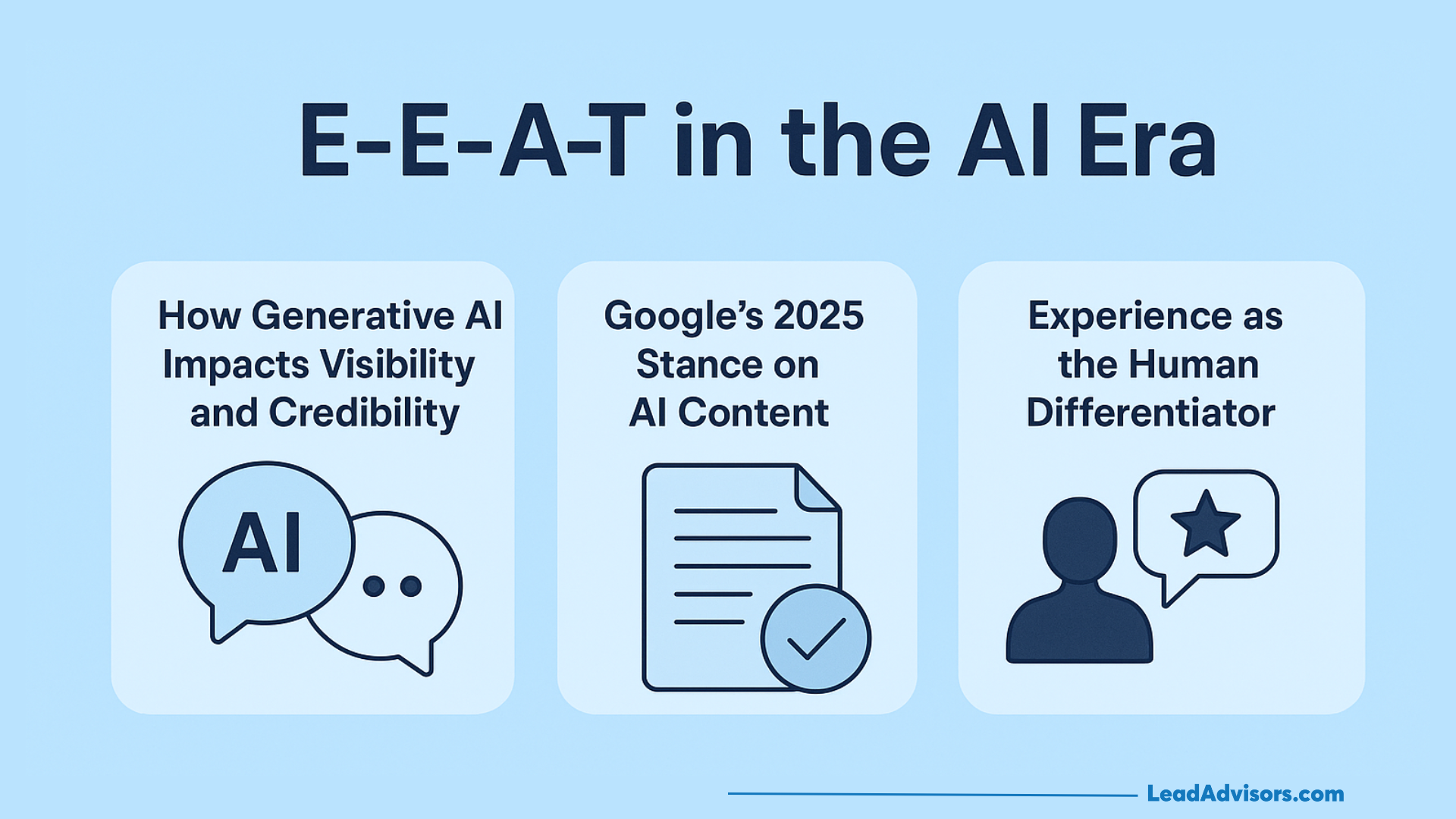
The speed at which people are implementing AI-generated material is redefining the way search engines measure credibility, accuracy, and originality. E-E-A-T is the new educational framework that can be used in this new era to help differentiate between real skills and generic AI content.
How Generative AI Impacts Visibility and Credibility
Content creation tools such as ChatGPT and Gemini have sped up the content creation process and have also flooded the search engine with artificial text that does not always offer depth or practical experience. Because of this, Google Search is prioritizing more and more the content creators who possess actual experience, are properly authored, and whose information is supported by verifiable facts.
To the SEO professionals, this implies that authenticity has been realized as a ranking privilege. Demonstrating human knowledge, examinations, and experience can assist in demonstrating that your writing is not merely precise but also reliable.
Google’s 2025 Stance on AI Content
The rules of Google are simple: the content enhanced with AI can be accepted as long as it is valuable, transparent, and controlled by a human. Three major principles were strengthened in the 2025 update:
- AI-assisted creation is allowed – as long as it follows Google’s quality guidelines.
- Human review and disclosure are mandatory – users should know when AI tools were used.
- Spam policies strictly prohibit manipulative or mass-produced AI-generated content designed only to influence rankings.
This strategy is in line with the mission of Google to provide useful, people-oriented content, which does not intend to serve a machine.
Experience as the Human Differentiator
Experience has become more important than all E-E-A-T factors. It is the most obvious evidence of authenticity – something that can not be replicated by AI-generated summaries or machine-written posts. The exchange of personal experiences and product reviews or real-life project input creates user trust and sets your brand apart in terms of voice.
Best Practices for AI-Era Content
To maintain credibility in the age of SEO AI and generative engine optimization:
- Adopt a human-in-the-loop workflow for review and editing.
- Include transparent “How this content was created” statements.
- Perform thorough fact-checking, originality verification, and source validation.
With AI efficacy and human skill, a brand can create quality content, which is compliant with Google E-E-A-T criteria – innovative, yet genuine content in the ever-changing digital marketing landscape.
How to Build a Long-Term E-E-A-T Roadmap
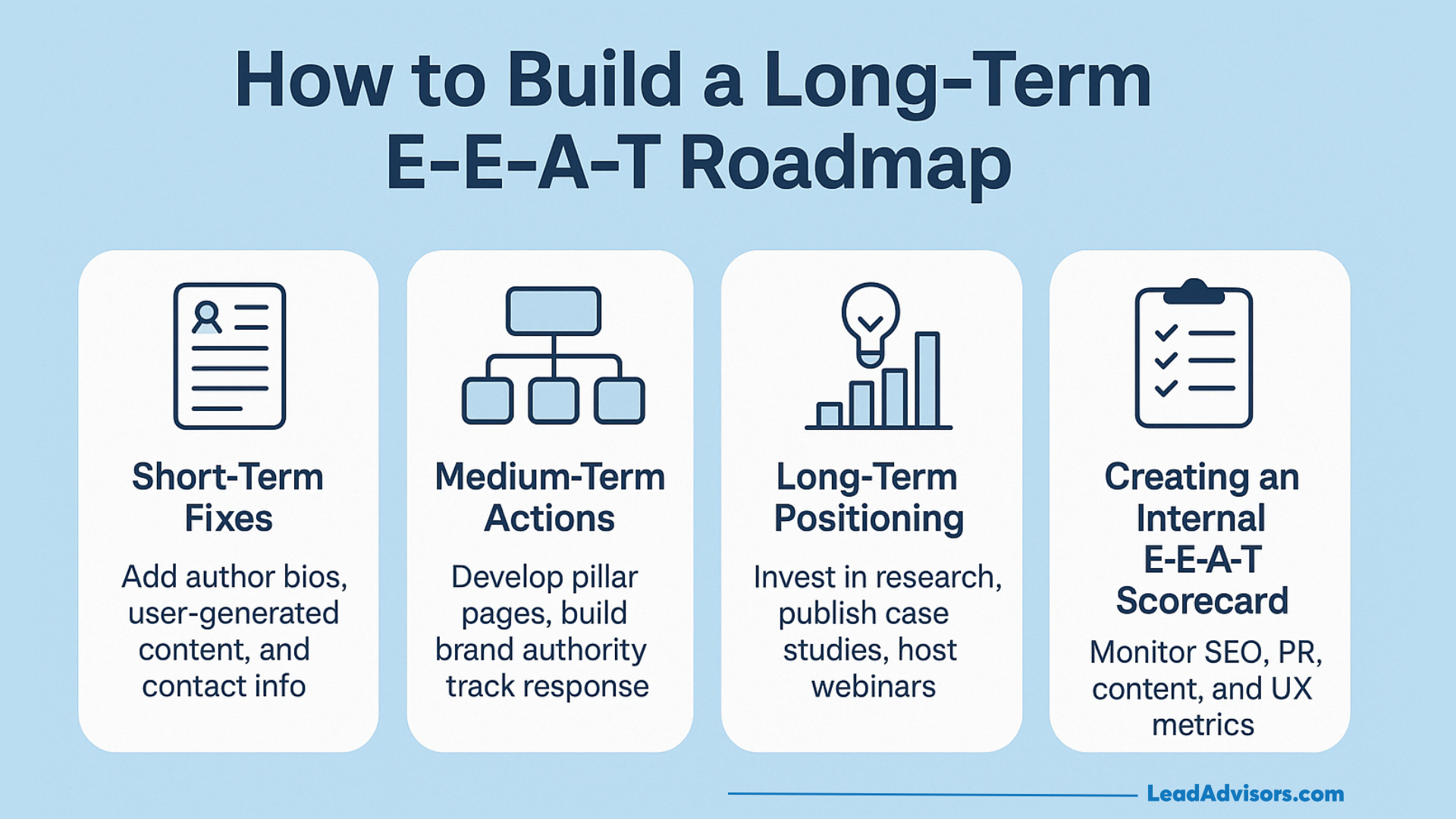
The creation of a good EEAT is a progressive project that cannot be implemented once and only needs alignment among the SEO, content, PR, and user experience teams. Google search owners need to devote themselves to constant upgrading and not to quick solutions to be able to succeed and keep their sites at the search level.
Short-Term Fixes
Start with the fundamentals. Author schema and make sure that every content creator is signed with a full bio, credentials, and verifiable experience. Include reviews, customer testimonials, and user-created content that show authenticity and create trustworthiness. Look in the contact details, company up-to-date information, and revised privacy rules – those minor indicators translate to the overall quality of the page.
Medium-Term Actions
When it is time to build a foundation, expand your content strategy. Create pillar pages and topical clusters to demonstrate subject matter authority and to boost search results.
Build brand authority via digital PR, alliances, and interviews. References on trusted sources, such as Google Business Profile, improve your brand image and create credibility.
Track brand awareness and response on social networks with a tool such as Semrush, BuzzSumo, or Hootsuite to publicize new touchpoints.
Long-Term Positioning
Thought leadership is long-term success. Make investments in research reports, data-driven, and co-branded projects that make your brand a trusted voice in your niche. Be able to work with people in the industry and use credible and reputable sources to show knowledge, authority, and reliability at all times.
Making case studies public, being a guest on a podcast, or hosting webinars assist in demonstrating a real-life experience and human experience – two domains in which AI-generated content will not be able to mimic.
Creating an Internal E-E-A-T Scorecard
In order to be able to measure progress, develop an EEAT scorecard that can be used to monitor your progress at departmental levels:
- SEO: Indexation health, search engine rankings, and structured data accuracy.
- PR: Brand mentions, positive reputation, and authoritative backlinks.
- Content: Accuracy, updates, and editorial quality.
- UX: Page performance, accessibility, and engagement signals.
With a cross-functional roadmap, your brand strengthens the E-E-A-T principles of Google – balancing credibility, high-quality content, and the authenticity of digital marketing that still persists with the changing algorithm and development of AI.
Frequently Asked Questions
What is E-E-A-T in SEO?
How does E-E-A-T impact SEO?
What are E-E-A-T signals?
How to improve E-E-A-T?
What is Google’s E-E-A-T guideline?
Key Takeaways: The Future of E-E-A-T Beyond SEO
E-E-A-T is no longer an SEO framework – the overlap of brand strategy, content integrity, and user experience. In the ever-changing algorithm of Google that is now adopting AI, trust is the unwavering base of online presence.
Think of it as a checklist for credibility:
- Be real → show experience through genuine insight and examples.
- Be right → demonstrate expertise through verified, high-quality content.
- Be recognized → earn authority with strong mentions and backlinks.
- Be reliable → maintain trust with transparency and accuracy.
Brands that value authenticity will do well in an ecosystem determined by AI-generated content and innovation in search engines. E-E-A-T is not merely about a ranking but rather is about relevance, reliability, and resonance.
In a world of AI answers, authenticity wins.



